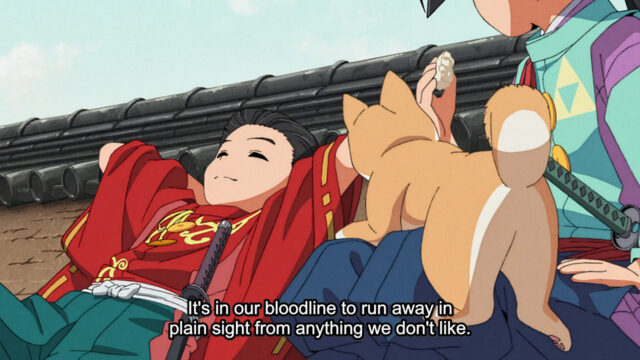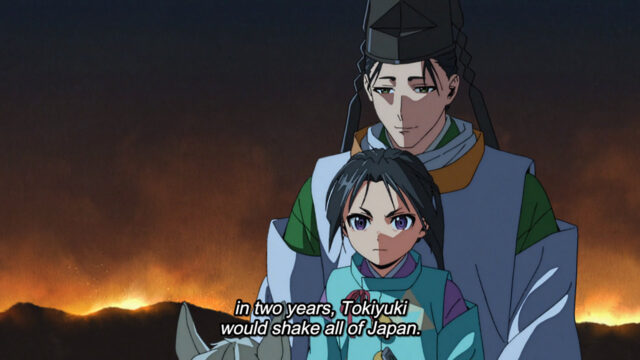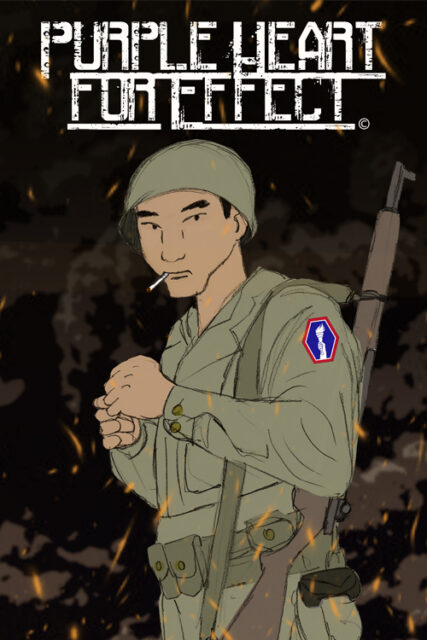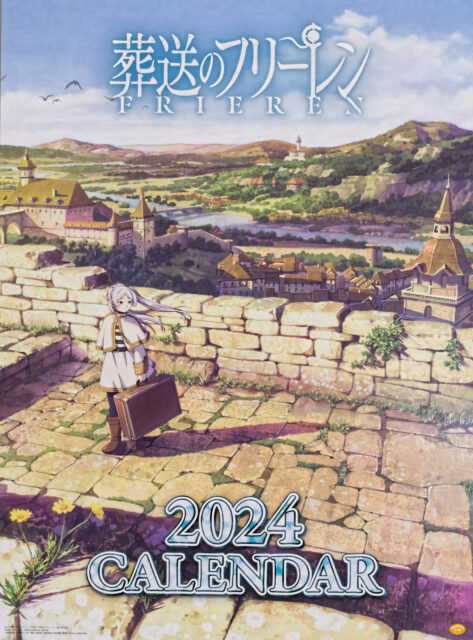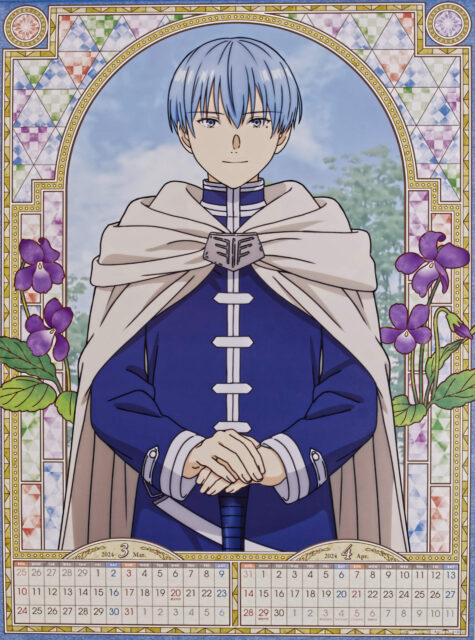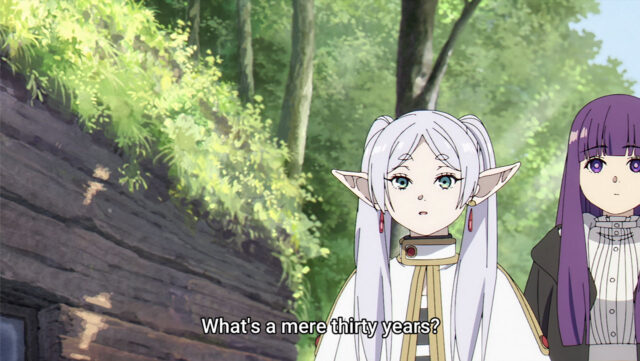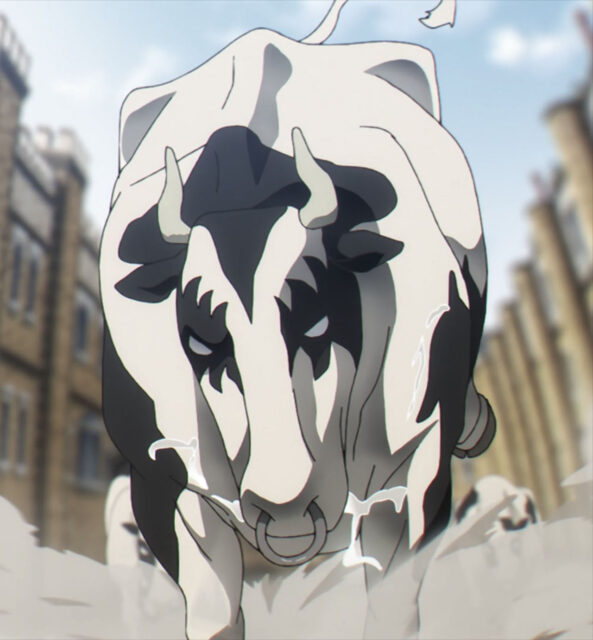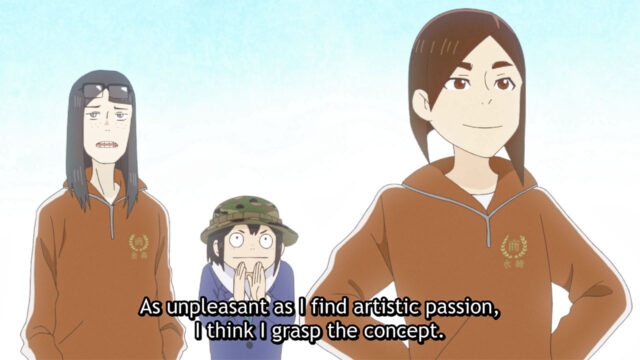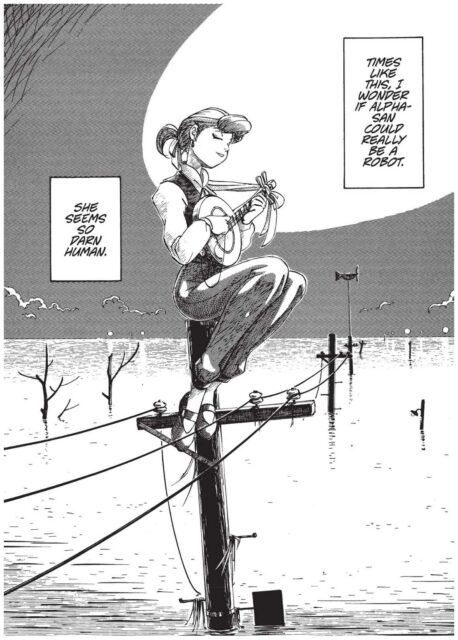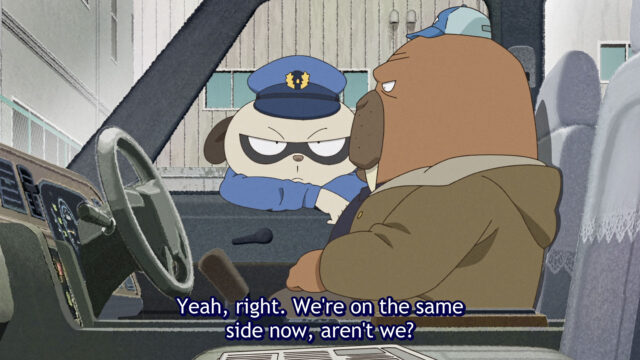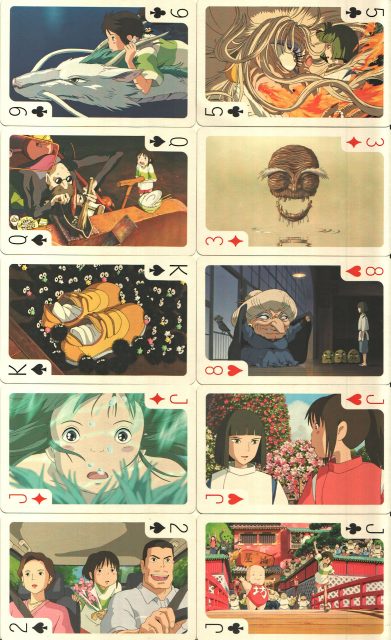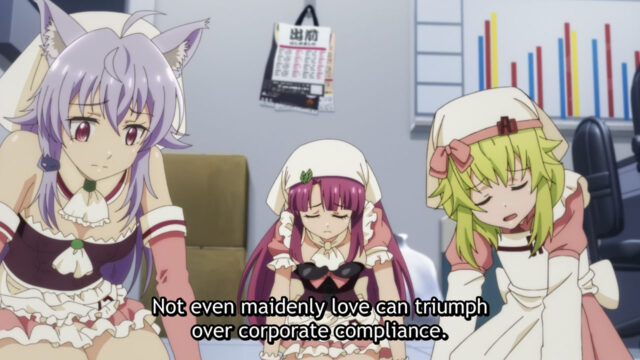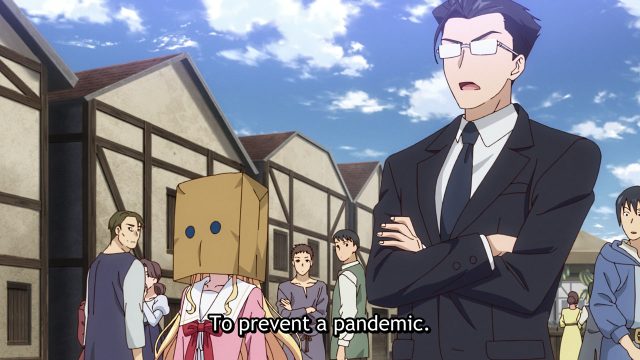So, should I cancel my Crunchyroll membership?
Last fall there were two first-rate shows broadcast, Frieren at the Funeral1 and The Apothecary Diaries. It’s generally years between series of this quality; I can’t remember the last time two aired simultaneously. This renaissance couldn’t last, of course. The second seasons of both shows were inferior to the first, and no other show I’ve recently sampled has approached the quality of the tales of Frieren and Maomao. Nevertheless, there are a few that I managed to watch all the way through that deserve mention.
Helck2 is second-rate Tatsuo Sato but still pretty good. Unfortunately, it stops two-thirds the way through the manga. Until the third season is animated I can’t recommend the show.
Mr. Villain’s Day Off concerns an alien general engaged in the conquest of Earth, and his activities during his down time. His time off is precious to him; he uses it to marvel at cute things and savor the simple pleasures of life on Earth. He takes pictures of the panda at the zoo. Nothing much happens, but that’s fine. Watching an episode is like taking a nap, which is not a bad thing when you have insomnia.
Villainess Level 99: I May Be the Hidden Boss But I’m Not the Demon Lord is another damned isekai, but it is surprisingly watchable. In this one the protagonist discovers that she is the final boss of a fantasy otome game, fated to be killed by the game’s heroine. She is not enthusiastic about this. Fortunately, she is level-headed, intelligent and practical, and Villainess Level 99 is one of the very few isekai I’ve watched more than one episode of.
In Train to the End of the World, Masami Eiri’s Protocol 7 (here called “7G”) is implemented when a girl presses a golden button. The result is chaos. Four schoolgirls commandeer a train and travel through a Japan become alien in search of the girl who pressed the button. The show was directed by Tsutomu Mizushima, who previously directed Girls und Panzer and Dai Mahou Touge/Magical Witch Punie-chan. Train is closer to the latter, but far more bizarre.
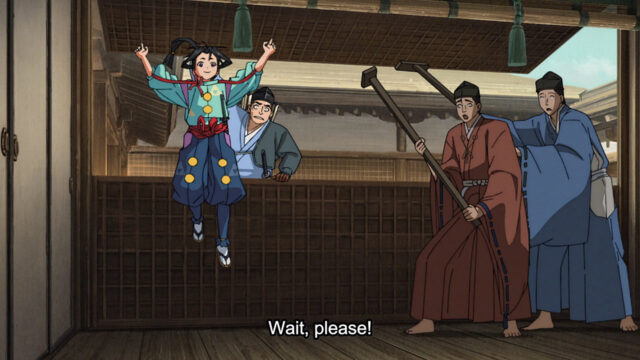
That brings us to the current season. Most of the offerings look like drivel, not worth $8/month. However, I did check out the first episode of The Elusive Samurai, and it might be watchable. The “elusive samurai” is the eight-year-old Tokiyuki Hojo, who has an exceptional ability to run away and hide — a useful talent in that dangerous era. The first half of the episode, in which Tokiyuki gleefully and acrobatically escapes from archery practice, is light and goofy. The second half is bloody, as nearly everyone he knows is killed. I expect that the story will play fast and loose with Japanese history, and there may be some fantasy elements as well. The series is based on manga by Yusei Matsui, who earlier wrote Assassination Classroom. This could be a good show if the humor and violence are as well-balanced as in the story of Koro-sensei.
If The Elusive Samurai is indeed good, or I discover another watchable show, I’ll maintain my Crunchyroll membership. Otherwise I’ll cancel it and wait until Maomao’s return next year to join again.
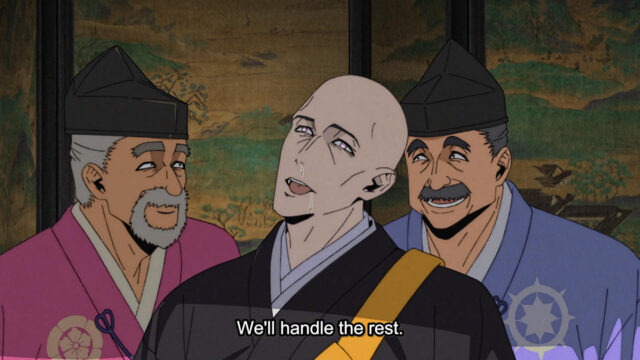
Update: Crunchyroll cancelled comments. I cancelled my subscription. The hell with them.

